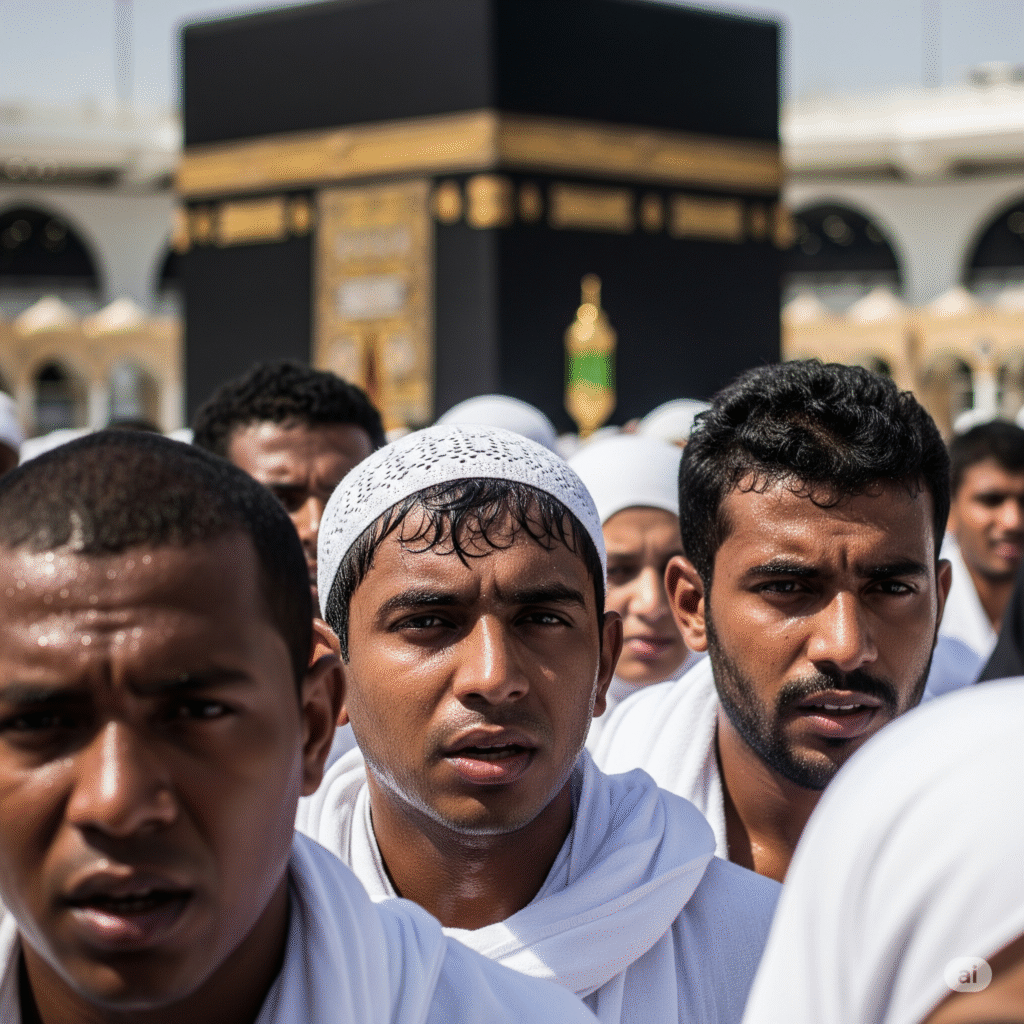Hajj 2025 Heat Crisis: Understanding Pilgrim Fatalities
Makkah’s Toughest Hajj: The 2025 Heat Crisis
The annual Hajj pilgrimage to Makkah is a sacred journey that draws millions of Muslims from across the globe, a testament to faith, unity, and devotion. However, the Hajj 2025 season will be remembered not just for its spiritual profoundness, but also for the unprecedented challenges faced by pilgrims, primarily due to extreme heat. This year, a significant number of pilgrim deaths tragically marred the holy rites, bringing into sharp focus the urgent need for enhanced Hajj safety measures in a world experiencing a changing climate.
The Soaring Temperatures and Their Deadly Consequences
Makkah experienced exceptionally high temperatures during Hajj 2025, with readings soaring well above 50°C (122°F) in some areas. For pilgrims, many of whom are elderly or have pre-existing health conditions, enduring such heat while performing strenuous rituals like circumambulating the Kaaba (Tawaf), rushing between Safa and Marwa (Sa’i), and standing at Arafat, proved to be an immense and often fatal challenge.
The primary cause of the reported Hajj 2025 deaths was heatstroke and heat exhaustion. These conditions can rapidly lead to organ failure and death if not addressed swiftly. The sheer volume of pilgrims, coupled with the intensity of the sun, created a perilous environment, especially during peak daylight hours.
The Challenge of Unregistered Pilgrims
A significant factor contributing to the tragic toll was the presence of a large number of unregistered pilgrims. These individuals often travel without official permits, meaning they lack access to the organized facilities and support systems provided by Saudi authorities, such as air-conditioned tents, medical aid stations, and regulated transportation. Without proper accreditation, they are more vulnerable to the harsh conditions, making emergency response efforts more complex. While their determination to perform Hajj is undeniable, the risks associated with unauthorized routes highlight a critical aspect of Hajj management that requires continued attention.
Saudi Arabia’s Response and Ongoing Efforts for Hajj Safety
The Kingdom of Saudi Arabia, as the custodian of the Two Holy Mosques, invests immense resources annually to facilitate the Hajj pilgrimage. In response to the Hajj 2025 challenges, authorities mobilized extensive medical teams, increased cooling stations, and provided vast quantities of water. Emergency services worked tirelessly to assist distressed pilgrims, transport them to hospitals, and manage the overwhelming influx of cases.
Looking ahead, the incident underscores the urgency for continuous improvement in Hajj safety protocols. Efforts include:
- Enhanced Heat Mitigation: Implementing more advanced cooling technologies, expanding shaded areas, and potentially adjusting schedules for rituals during peak heat.
- Stricter Regulation of Permits: Reinforcing rules against unauthorized pilgrims to ensure everyone has access to essential services and proper registration for their safety.
- Public Awareness Campaigns: Educating future pilgrims about the dangers of extreme heat, importance of hydration, and necessity of adhering to official guidelines.
- Infrastructure Development: Ongoing projects in Makkah, part of Saudi Vision 2030, aim to expand capacity and improve facilities to accommodate more pilgrims safely and comfortably, including Masar Project Makkah and the surge in licensed Makkah hospitality facilities.
Lessons Learned and the Enduring Spirit of Hajj
The Hajj 2025 season, while marked by sorrow, also serves as a poignant reminder of the incredible resilience and unwavering faith of the global Muslim community. The challenges faced will undoubtedly lead to crucial adjustments and innovations, ensuring that future pilgrimages are safer and more accessible for all.
Despite the difficulties, the spiritual essence of Hajj remains undiminished. It continues to be a profound journey of self-discovery, repentance, and unity, drawing hearts towards the sacred city of Makkah. As the world grapples with climate change, adapting to its impacts on large-scale gatherings like Hajj becomes paramount, ensuring that this pillar of Islam can be performed safely and meaningfully for generations to come.
References and Further Reading
For detailed information and updates regarding the Hajj 2025 season and its challenges, please refer to reports from reputable news organizations and official statements.
- Official Saudi Press Agency (SPA): The primary source for official announcements and statistics from the Kingdom of Saudi Arabia regarding Hajj management and pilgrim services. (Note: You would link directly to relevant SPA articles or their main Hajj section here.)
- Leading International News Agencies: Reports from outlets like Reuters, Associated Press (AP), BBC News, or Al Jazeera typically provide fact-checked and comprehensive coverage of global events, including the Hajj. (Note: Link to specific news reports covering the Hajj 2025 fatalities and heat challenges from these sources.)
- Ministry of Hajj and Umrah, Saudi Arabia: Official guidelines, regulations, and updates for pilgrims are often found on their official website. (Note: Link to their official website or relevant Hajj safety sections.)
- World Health Organization (WHO): For information on heatstroke prevention and public health advisories during large gatherings. (Note: Link to WHO’s public health guidance on extreme heat or mass gatherings.)
- [Internal Link to Your Website]: For more insights into the spiritual significance of the pilgrimage, read our article: Understanding the Spiritual Journey of Hajj and Umrah. (This is an example of an internal link to another article on your “Bismillah Makkah” website, which you would replace with your actual article title and URL.)
